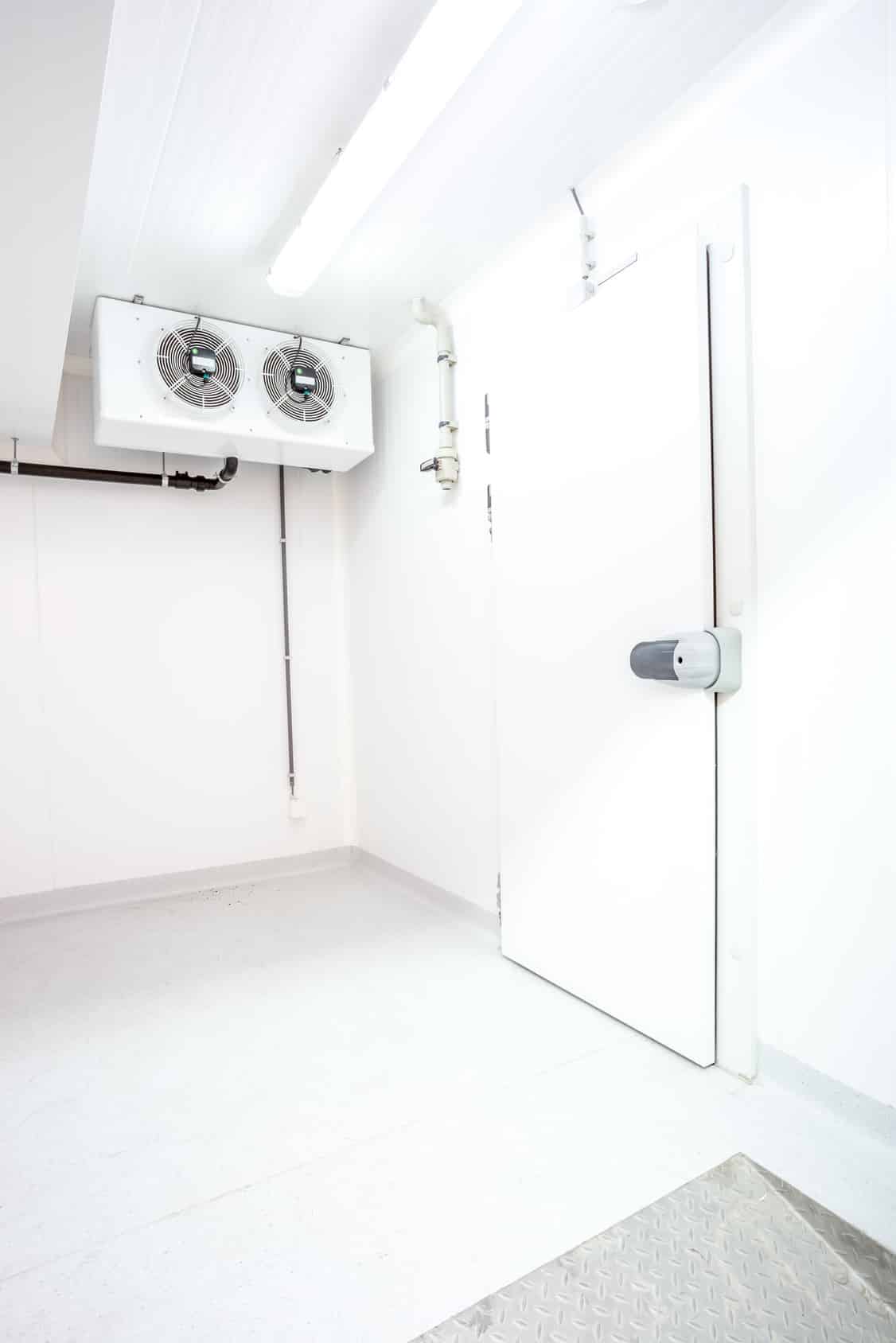Did you know that cold storage warehouses are used to store more than $200 billion worth of refrigerated and frozen food products each year? What’s more is that they’re also used in pharmaceutical and high-tech industries to keep products safe and active. As of 2016, the overall global capacity of refrigerated warehouses reached around 600 million cubic meters. The gross refrigerated storage capacity in the United States alone is over four million cubic meters.
Refrigeration Temperatures for Safe Food
The importance of keeping food and products cold is one that impacts millions of Americans each year. Without high-performing cold storage warehouses, food products could put our health and wellness at risk. Refrigeration slows bacterial growth in food and other products. Of course, bacteria exists naturally in nature, but when they have nutrients, moisture, and the right temperature, they grow to excess where they then can cause illness. Rapid growth typically takes place between 40 and 140-degree Fahrenheit. Most refrigeration systems set to or below 40 degrees will keep food safe from harmful bacteria, but slight changes in the refrigeration system, like increased heat or moisture, can cause increased bacteria growth.
Refrigeration Temperatures for Safe Pharmaceuticals
Food is not the only product at risk when stored in inefficient cold storage facilities. Throughout the past 10 years, pharmaceutical cold storage needs have skyrocketed. Meaning an increased need for storage facilities to house these medicines. Of the 57 new drug approvals issued by the FDA in 2017, 28 of the 57 are temperature-sensitive products with 23 requiring refrigeration storage and transportation. Five additional products require cryogenic (below-zero) temperatures. In the Pharmaceutical Commerce Magazine 2017 Cold Chain Outlook, the global volume of 2017 cold chain products is estimated to be $283 billion. Unlike food, pharmaceuticals have a lower threshold for variances in temperature. Proper temperature is between 35.6 and 46.4 degrees Fahrenheit with the optimal temperature at 41 degrees Fahrenheit. Common issues in transportation, packaging, and handling can all lead to ineffective pharmacy products.
Assessments for High-Performing Systems
To ensure these systems perform accurately, they need to be regularly assessed for precision and evaluated for heat loss or inefficiency. One of the best methods for assessing refrigerated warehouses is with infrared thermographic inspections. Infrared thermography is a nondestructive and nonintrusive mapping of thermal patterns. These inspections typically take place on the exterior walls and the ceiling from the interior and exterior where possible. The purpose is to inspect and document heat loss, heat gain, and any other abnormalities in the refrigeration system.
Infrared Thermographic Inspections
So how does this work? Infrared thermographic inspections show images of heat loss or gain and other abnormalities in two scenarios when the unit is on and again when the refrigeration unit is turned off in many cases. Moisture testing is also done to ensure the moisture of a facility is operating within acceptable variances. To give us a better sense of this imaging, and how the findings help protect consumers of refrigerated food and pharmaceuticals, let’s look at a case study performed by Building Envelope Allies, and the findings from an infrared thermographic inspection. The inspection was completed on the exterior walls and ceiling from the interior and exterior. Imaging of the building envelope was also completed, as well as pressure measurements, humidity, and air changes.
Building Envelope Allies Case Study Findings
Building Envelope Allies findings from the assessment included moisture in the wall system, negative pressure, convection and conductive losses. In conclusion of the testing, the results show that the situation made it difficult for the refrigeration system to keep up with the cooling demands of the products. With routine assessments and maintenance performed on findings, problems can be remedied before serious consequences to the product occur. For full details on the study, you can read more here.
Refrigerated storage facilities are necessary to our current cold chain storage and handling now, and will only become more prevalent in the future. As we move forward with more demand for cold storage, it’s critical to assess and maintain these units to avoid product waste or health concerns. Learn more about Building Envelope Allies infrared refrigeration assessments, and make sure you aren’t losing products or spending more on maintaining the correct temperatures or these products with regular assessments. Submit your proposal request here.







